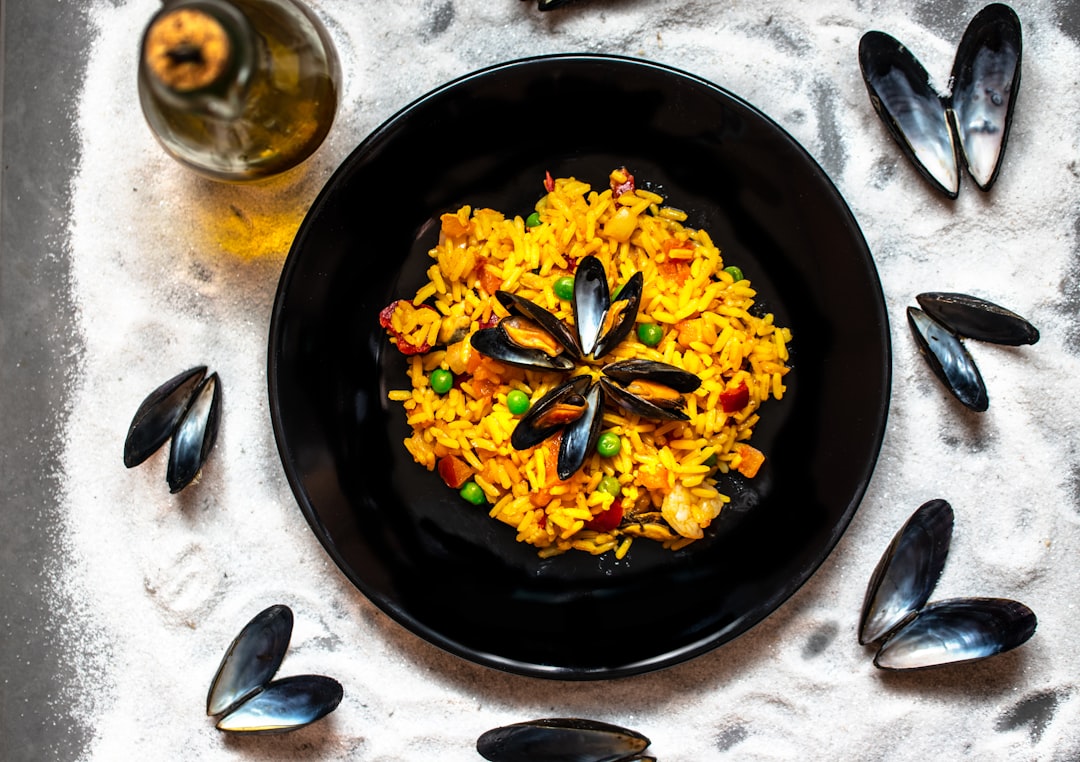Paella
At its core, paella is an enthralling medley of textures and tastes, resulting in an extraordinary culinary experience. It is a delicious smorgasbord of savory elements that tantalize the tongue, as each bite brings with it an array of flavors, from the salty bite of olives to the delicate sweetness of tomatoes.
This delectable dish has its origins in Valencia, a region known for its fresh and inviting cuisine. As the story goes, paella originated with workers in the rice fields, who would use whatever ingredients were on hand to create their own individualized versions of paella. Today, there are countless interpretations of the classic recipe, from seafood-laden dishes to vegan-friendly concoctions.
No matter the type of paella being prepared, the key to success lies in the selection of ingredients. From the type of rice used to the kinds of herbs, spices, and proteins incorporated, every element of this time-honored dish plays an important role in creating its distinct and exquisite flavor.
Overall, paella is a spectacular way to bring comfort and joy to any meal. Its powerhouse of savory ingredients come together to produce a balanced and satisfying dish that is sure to be savored. So the next time you want to indulge in something special, look no further than this classic Spanish treat - paella.
Paella recipes
Amazing Paella recipes sourced from the web.
The origin of Paella
Ah, Paella. It's a classic Spanish dish with a unique flavor and history that stretches back centuries. From its humble beginnings in Valencia, Spain, to its current status as one of the most popular dishes around the world, paella is the epitome of Spanish cuisine.
To understand the origins of this delectable meal, we must travel back to the Middle Ages, when Paella first graced the tables of the Valencian people. The word “paella” comes from the Latin word for pan, and originally referred to the heavy iron pans used to cook the dish. It was believed that the people of Valencia had brought a form of rice dish to Spain from the Moors during the Islamic influence of the 8th century.
Though paella was likely a simple, peasant dish in its early days, it has evolved over time to include a variety of ingredients. At its core, paella typically consists of rice, saffron, vegetables, and meat or seafood, all cooked together in a shallow iron pan - but over the years, these ingredients have changed to incorporate whatever was available locally. In some cases, artichokes, tomatoes, and even beans (known as "fideuà" )may be added to the mix.
Today, paella is an iconic dish representing the panoply of Spanish culture. Whether it's the traditional Valencian paella - yellow-hued rice, succulent meats and vegetables, and a few exquisite spices - or its many variations - seafood, mixed, vegetarian - paella is a Spanish classic, consumed with gusto around the world. This is thanks in part to its rich history, which has undoubtedly influenced the evolution of the dish, making it one of the most beloved meals of our time.
Types of Paella
and phrases
Paella is a delectable, yet multifaceted accomplishment of culinary wit and finesse. It it a dish which has been forever revered in its native Spain, and has since enjoyed recognition the world over.
In its simplest form, Paella is an amalgamation of saffron-spiked rice, vegetables and meat, seasoned with herbs and spices. Yet, at its core, it is a composite of regional cultures; a testament to the creative genius of the many who have called Spain home.
From the Valencia region – where it is believed to have originated- comes the classic Valenciana. This consists of short-grain rice, snails, chicken, and various vegetables. In the south east, the seaside dish Marinera combines bounty from the sea like lobster, shrimp and monkfish. Further north, Asturianas presents locally farmed meats including rabbit, pork and veal.
Different variants of Paella also abound in the neighbouring country of Portugal. Here, one finds a tamer version such as the Arroz Doce – a pudding-like sweet rice dessert. Not to be forgotten are the more exotic ones such as the Paelha de Negra; a black Paella delicately flavored with squid ink and delicacies of the deep.
Overall, Paella is a sumptuous gift to the palate and a testament to the Spanish culture of viveza (quick wittedness) and ingenuity. And though there may be many variations, they all make use of simple local ingredients, combined in a harmonious manner to create something truly extraordinary.




